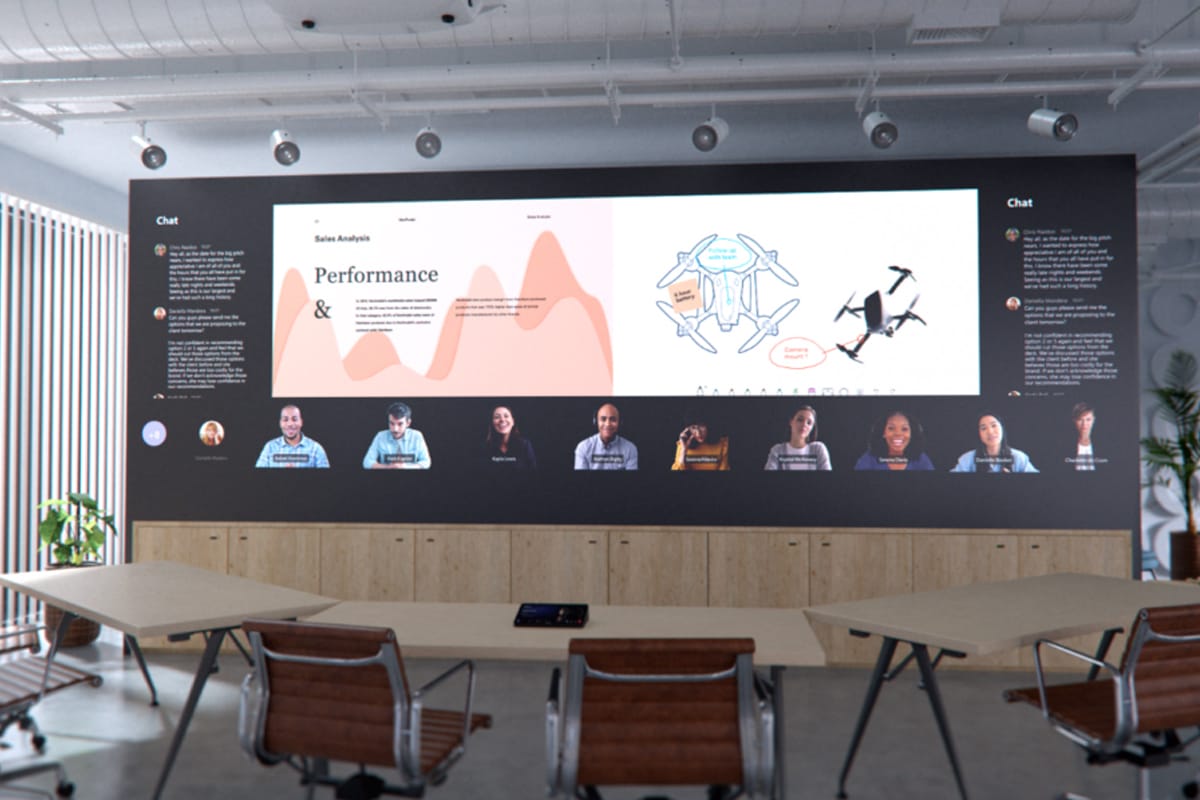This is Microsoft’s Front Row concept of the future for Teams Rooms
What can we take from it now in 2022 to make better Teams Rooms and hybrid spaces?

As part of a series of short articles, Visual Displays' Director Greg Jeffreys discusses all things AV…
Personally, I think it’s brilliant. There’s a day’s worth of analysis and unpacking in itself. But what about right here, right now?
In terms of my current work and our development I’d separate out the wide narrow format from the use of the ‘digital canvas’ - the display size moving a step change up from current conventional ‘wisdom’.
I’m looking forward to creating displays or portals like these but thinking more mainstream, a large budget system for a small roomful will not comprise our daily bread. Also I’m going to run some 3D CAD iterations on our parametric DISCAS model as I’m interested in where the end stops are in terms of viewers one side seeing content the other side.
Leaving aside the screen width of this vision piece, the step change up in image size to offer such digital canvases is the big breakthrough. If we envisage this as a large (typically 120” to 140”) UHD 4K display in 16:9, then this means we can fulfil the basic tenet of of AVIXA’s DISCAS standard whereby a content window within the overall digital canvas can be fully engaged with at the back of the room.
Limiting the image width means that large 3-sided horseshoe table layouts can be created, factoring the risk of closer participants blocking the view of the sides of the image.
Search the Microsoft YouTube channel for “Collaboration that is built for hybrid work” on and you’ll see this in the flesh. It’s done with projection. Projection done properly will deliver the high contrast, low luminance, matt non-reflective surfaces needed for these systems, but the correct ALR (ambient light rejecting) screen technology must be used. The display performance datum is the image black level.

Posted: 26th January 2022